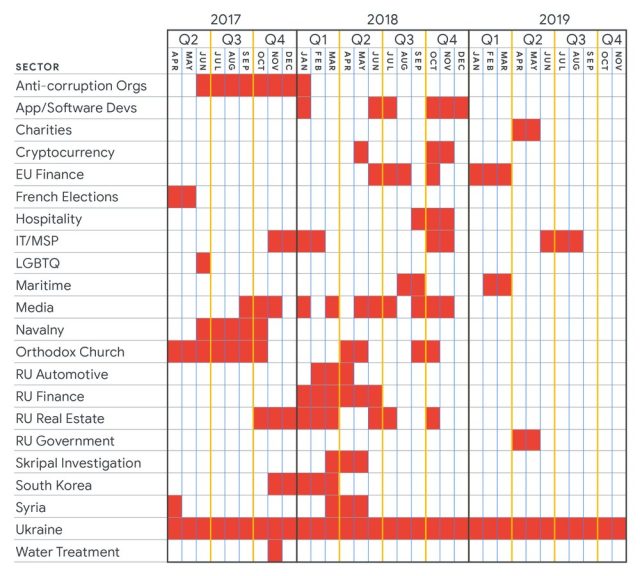Primer: We all seem to guess this except for Jim Acosta/CNN and the others at MSNBC. Media continues to blame the Trump White House for the slow response to address COVID-19, while Dr. Birx and Dr. Fauci explained what they did not know very early on. Now we know.
Now some real questions and new policy towards China must be considered. We can start with the $1.8 T in U.S. debt that China holds. The next is challenging American telecommunications companies to squelch China’s advances of 5G. Then there is the next phase of the U.S. trade agreement with China. Add in the mission to stop China’s power agenda across the globe as it is clear, China is fine with killing people and economies across the world.
China has concealed the extent of the coronavirus outbreak in its country, under-reporting both total cases and deaths it’s suffered from the disease, the U.S. intelligence community concluded in a classified report to the White House, according to three U.S. officials.
The officials asked not to be identified because the report is secret and declined to detail its contents. But the thrust, they said, is that China’s public reporting on cases and deaths is intentionally incomplete. Two of the officials said the report concludes that China’s numbers are fake.
The report was received by the White House last week, one of the officials said. The outbreak began in China’s Hubei province in late 2019, but the country has publicly reported only about 82,000 cases and 3,300 deaths, according to data compiled by Johns Hopkins University. That compares to more than 189,000 cases and more than 4,000 deaths in the U.S., which has the largest publicly reported outbreak in the world.
Communications staff at the White House and Chinese embassy in Washington didn’t immediately respond to requests for comment.
While China eventually imposed a strict lockdown beyond those of less autocratic nations, there has been considerable skepticism of China’s reported numbers, both outside and within the country. The Chinese government has repeatedly revised its methodology for counting cases, for weeks excluding people without symptoms entirely, and only on Tuesday added more than 1,500 asymptomatic cases to its total.
Stacks of thousands of urns outside funeral homes in Hubei province have driven public doubt in Beijing’s reporting.
Deborah Birx, the State Department immunologist advising the White House on its response to the outbreak, said Tuesday that China’s public reporting influenced assumptions elsewhere in the world about the nature of the virus.
“The medical community made — interpreted the Chinese data as: This was serious, but smaller than anyone expected,” she said at a news conference on Tuesday. “Because I think probably we were missing a significant amount of the data, now that what we see happened to Italy and see what happened to Spain.”
China is not the only country with suspect public reporting. Western officials have pointed to Iran, Russia, Indonesia and especially North Korea, which has not reported a single case of the disease, as probable under-counts. Others including Saudi Arabia and Egypt may also be playing down their numbers.
U.S. Secretary of State Michael Pompeo has publicly urged China and other nations to be transparent about their outbreaks. He has repeatedly accused China of covering up the extent of the problem and being slow to share information, especially in the weeks after the virus first emerged, and blocking offers of help from American experts.
“This data set matters,” he said at a news conference in Washington on Tuesday. The development of medical therapies and public-health measures to combat the virus “so that we can save lives depends on the ability to have confidence and information about what has actually transpired,” he said.
“I would urge every nation: Do your best to collect the data. Do your best to share that information,” he said. “We’re doing that.”
The outbreak began in China’s Hubei province in late 2019, but the country has publicly reported only about 82,000 cases and 3,300 deaths, according to data compiled by Johns Hopkins University. That compares to more than 189,000 cases and more than 4,000 deaths in the U.S., which has the largest publicly reported outbreak in the world.
Abstract
Background: The COVID-19 outbreak containment strategies in China based on non-pharmaceutical interventions (NPIs) appear to be effective. Quantitative research is still needed however to assess the efficacy of different candidate NPIs and their timings to guide ongoing and future responses to epidemics of this emerging disease across the World. Methods: We built a travel network-based susceptible-exposed-infectious-removed (SEIR) model to simulate the outbreak across cities in mainland China. We used epidemiological parameters estimated for the early stage of outbreak in Wuhan to parameterise the transmission before NPIs were implemented. To quantify the relative effect of various NPIs, daily changes of delay from illness onset to the first reported case in each county were used as a proxy for the improvement of case identification and isolation across the outbreak. Historical and near-real time human movement data, obtained from Baidu location-based service, were used to derive the intensity of travel restrictions and contact reductions across China. The model and outputs were validated using daily reported case numbers, with a series of sensitivity analyses conducted. Results: We estimated that there were a total of 114,325 COVID-19 cases (interquartile range [IQR] 76,776 – 164,576) in mainland China as of February 29, 2020, and these were highly correlated (p<0.001, R2=0.86) with reported incidence. Without NPIs, the number of COVID-19 cases would likely have shown a 67-fold increase (IQR: 44 – 94), with the effectiveness of different interventions varying. The early detection and isolation of cases was estimated to prevent more infections than travel restrictions and contact reductions, but integrated NPIs would achieve the strongest and most rapid effect. If NPIs could have been conducted one week, two weeks, or three weeks earlier in China, cases could have been reduced by 66%, 86%, and 95%, respectively, together with significantly reducing the number of affected areas. However, if NPIs were conducted one week, two weeks, or three weeks later, the number of cases could have shown a 3-fold, 7-fold, and 18-fold increase across China, respectively. Results also suggest that the social distancing intervention should be continued for the next few months in China to prevent case numbers increasing again after travel restrictions were lifted on February 17, 2020. Conclusion: The NPIs deployed in China appear to be effectively containing the COVID-19 outbreak, but the efficacy of the different interventions varied, with the early case detection and contact reduction being the most effective. Moreover, deploying the NPIs early is also important to prevent further spread. Early and integrated NPI strategies should be prepared, adopted and adjusted to minimize health, social and economic impacts in affected regions around the World.







/arc-anglerfish-arc2-prod-mco.s3.amazonaws.com/public/CRAGRKC4UZGY5AI3VAGWXY4YTM.jpg) The Indian Space Research Organisation’s (ISRO) GSAT-9 on board the Geosynchronous Satellite Launch Vehicle (GSLV-F09), launches in Sriharikota in the state of Andhra Pradesh on May 5, 2017. / AFP PHOTO / ARUN SANKAR (Photo credit should read ARUN SANKAR/AFP/Getty Images)
The Indian Space Research Organisation’s (ISRO) GSAT-9 on board the Geosynchronous Satellite Launch Vehicle (GSLV-F09), launches in Sriharikota in the state of Andhra Pradesh on May 5, 2017. / AFP PHOTO / ARUN SANKAR (Photo credit should read ARUN SANKAR/AFP/Getty Images)
